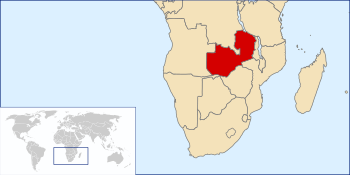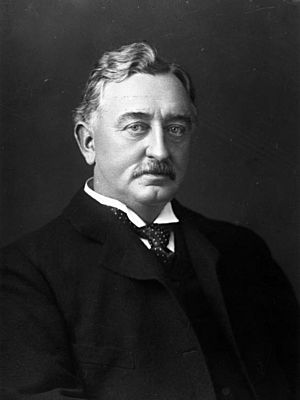Northern Rhodesia facts for kids
Quick facts for kids
Protectorate of Northern Rhodesia
|
|||||||||||||
|---|---|---|---|---|---|---|---|---|---|---|---|---|---|
| 1924–1953 1963–1964 |
|||||||||||||
|
Anthem: God Save the Queen
|
|||||||||||||

Location of Northern Rhodesia in Southern Africa.
|
|||||||||||||
| Status | Protectorate of the United Kingdom | ||||||||||||
| Capital | Livingstone (until 1935) Lusaka (from 1935) |
||||||||||||
| Common languages | English | ||||||||||||
| Government | Republic | ||||||||||||
| Governor | |||||||||||||
|
• 1924–1927
|
Sir Herbert Stanley | ||||||||||||
|
• 1959–1964
|
Sir Evelyn Hone | ||||||||||||
| Prime Minister | |||||||||||||
|
• 1964
|
Kenneth Kaunda | ||||||||||||
| Historical era | Interwar period · Cold War | ||||||||||||
1911 |
|||||||||||||
|
• British protectorate
|
1 April 1924 | ||||||||||||
|
• Federated with Nyasaland
|
1953–1963 |
||||||||||||
|
• Independence
|
24 October 1964 | ||||||||||||
| Currency | Southern Rhodesian pound | ||||||||||||
|
|||||||||||||
Northern Rhodesia was a territory in south-central Africa. It was created in 1911. It became an independent country in 1964. Today, this country is known as Zambia.
The name "Rhodesia" used to refer to a large area. This area now includes both Zambia and Zimbabwe. After 1964, the name "Rhodesia" only referred to Southern Rhodesia.
Contents
History of Northern Rhodesia

How Northern Rhodesia Got Its Name
The name "Rhodesia" came from Cecil John Rhodes. He was a very important British empire-builder. Rhodes played a big role in how Britain expanded its power in southern Africa.
Rhodes helped Britain gain control of the region. He did this by getting rights to minerals from local chiefs. These agreements were sometimes made under unclear conditions.
Early British Influence
Rhodes decided to colonize Northern Rhodesia after he had already taken control of Nyasaland. He sent people like Alfred Sharpe and Frank Elliott Lochner from Nyasaland. Their job was to make treaties with chiefs in the Northern Rhodesia area.
In 1890, King Lewanika of the Barotse signed a treaty. By 1891, the area north of the Zambezi River was officially placed under the control of the British South Africa Company. This company had a special document called a Charter.
Development and Economy
The British South Africa Company built a railway. It ran from Livingstone to the Belgian Congo. This railway was built between 1904 and 1909. Some mines were also started during this time.
However, the Company mostly saw Northern Rhodesia as a place to find workers. These workers could then be sent to Southern Rhodesia. There was also some cattle farming in the Barotseland area.
Legal System and Administration
The laws in Northern Rhodesia were based on British common law. This was different from Southern Rhodesia. Southern Rhodesia used Roman-Dutch law.
In 1916, the British South Africa Company tried to combine the way the two territories were run. But this plan failed. The European settlers in Southern Rhodesia did not want to be responsible for a large, undeveloped area. They also did not like that Northern Rhodesia hired Africans for administrative jobs. This was because there were not enough European settlers there.
Because of these disagreements, an Advisory Council was created. This council allowed settlers to share their opinions with the Company.
Related pages
Images for kids
-
Cecil Rhodes (1853–1902)
-
The arms of the British South Africa Company
-
The Legislative Assembly with Colonial Secretary Arthur Creech Jones (far right) in 1949
See also
 In Spanish: Rodesia del Norte para niños
In Spanish: Rodesia del Norte para niños









